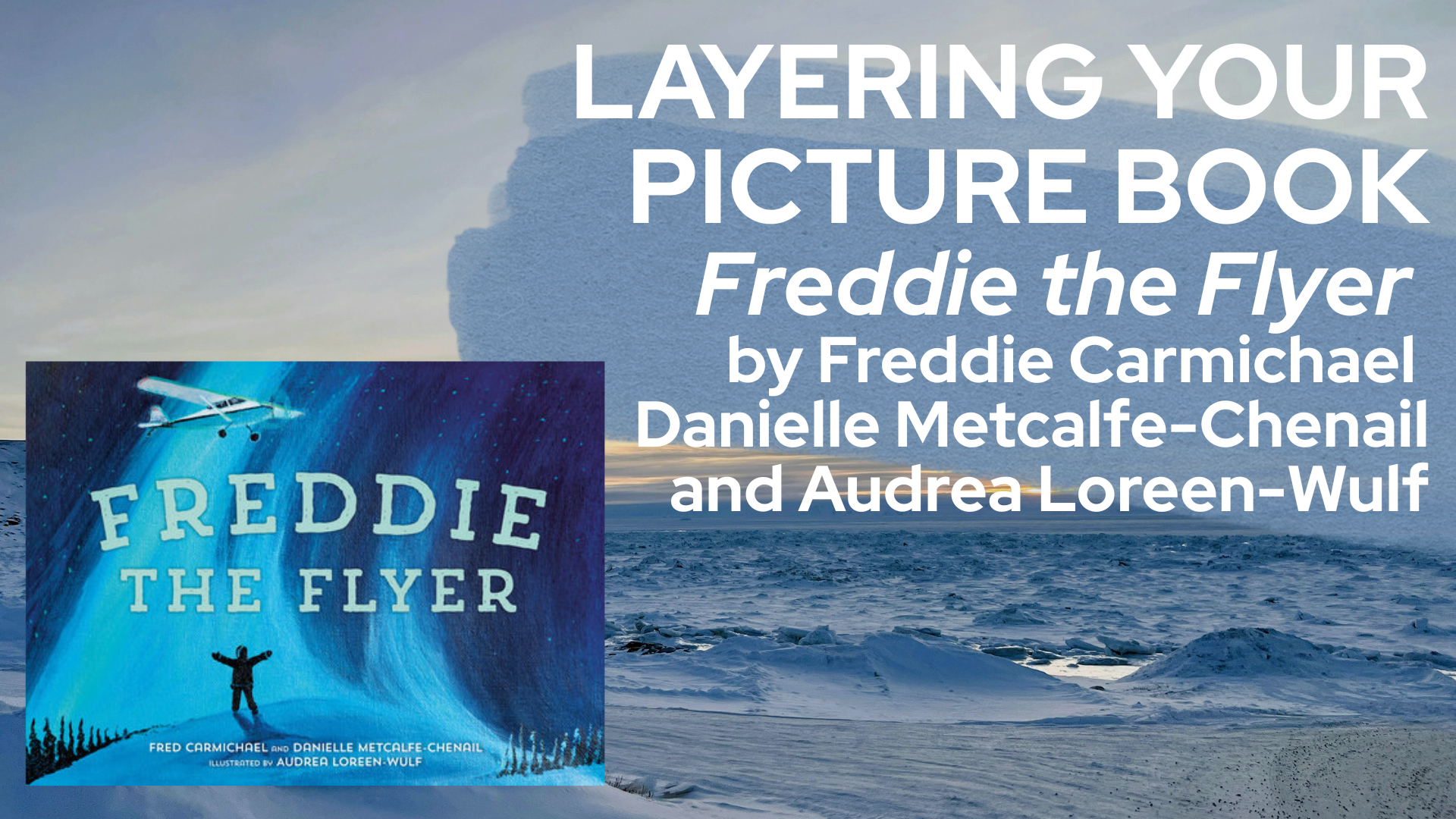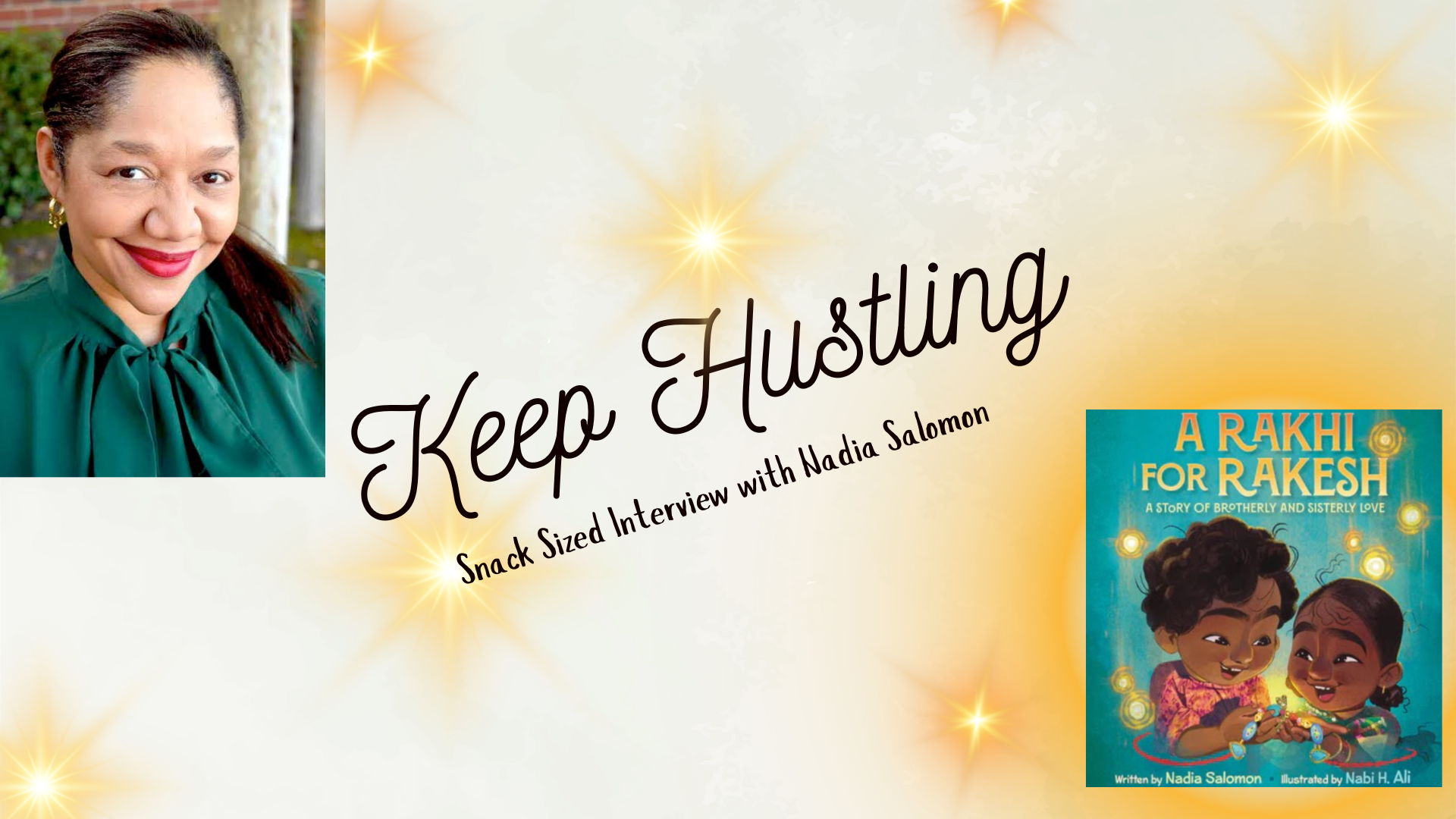Craft Articles
Join us in exploring others’ craft and building our own.
Here you will find explorations of mentor texts – articles that dive into specific craft elements in published books, interviews with authors, and tips on growing and improving as a writer.
Disclaimer: Some posts include bookshop.org affiliate links. Use the links to support KidLit Craft and local bookstores, at no additional cost to you.
Browse the Blog

Donna Janell Bowman: Customize Each Character’s Voice
“I’m driven to write by the child I used to be, the children I raised, and other curious or angsty young readers who turn to books for answers, adventure, or hope.”

Layering Your Picture Book: Freddie the Flyer by Freddie Carmichael and Danielle Metcalfe-Chenail
A great picture book has multiple layers that add depth to the story and make it a re-readable experience for children and caregivers alike.
The picture book biography Freddie The Flyer, by Fred Carmichael and Danielle Metcalfe-Chenail, illustrated by Audrea Lorren-Wulf, is a perfect example of how layers can work together to tell a compelling story.

Isabella Kung: Write from the Heart
“Don’t be swayed or crippled by all the doubts and fears, trust in your instincts, and write from the heart. During the lowest of my lows, I felt so lost and started to doubt this dream of creating my own picture books. I'm so glad I was able to ride that storm out and persist! Dreams do come true.”

J.E. Thomas: Trust Your Instincts
“At one point, I saw writing as a competitive enterprise. But what I've discovered is that authors and writers have a strong sense of community. Many of us find great joy in helping others. Being able to mentor and encourage the next generation of authors is wonderfully inspiring.”

Charlotte Cheng: Put Yourself Out There
“Put yourself out there, because you never know when the timing and preparation will finally coincide for your book. Sometimes, your story has been refined and is ready for publication, but the timing of the children’s book market isn’t quite right. You never know unless you keep revising and submitting.”

Khadijah VanBrakle: Great Books Take Time
“Take as much time as you need to learn the craft of telling stories. Often, new authors are in a rush but great books take time to write and revise, especially when you’re starting out.”

Sandra V. Feder: The Importance of Play
“Try your hand at many different types of stories and formats. I don't think I would have come up with a unique format for my emotions books if I hadn't already done early chapter books and picture books.”

Miriam Chernick: Enjoy the Process
“I'd tell myself not to sweat the small stuff. There’s a lot to learn about the industry, the editorial process, launching a book, selling a book, and getting feedback in the market. So enjoy the process. Don’t be too concerned about trying to make sure everything goes right since most of that is out of the author’s control anyway!”

Ron Wolff: Joy Is Your Long Game
“Write what gives you joy, not what seems like it might sell…. Writing is hard. Publishing can be brutal. You have to seek joy more aggressively than you seek sales. Joy is your long game.”

Donna Galanti: Regaining A Sense of Wonder
“As adults writing for children, how can we recapture childlike wonder? It isn’t about returning to a childlike state–it’s about letting yourself be awed by the little things in your grownup life. The mundane everyday routines can dull our wonder. And just because those little things happen every day doesn’t mean they aren’t miraculous. They are. And they inspire me to write.”

Nadia Salomon: Keep Hustling
“Keep hustling. Keep following your arrow, even when no one sees your vision. Rejection still happens, it doesn't define you or the value of your work. Publishing is a subjective industry, until you find people who align with your values and support your creative endeavors.”

Jasmine Warga: Take Risks
“My biggest tip would be to take risks in your art. Think about styles you haven't tried yet. Push yourself out of your comfort zone.”

Rhonda DeChambeau: Writing Heart Moments
“I once heard Jane Yolen say that ideas are all around us, that they are like leaves, and we just have to notice them. I find when I’m tuned in to being creative, paying attention, or being mindful, when I’m taking things slow and not just rushing through my day to check off my to-do list, I notice the ideas around me.”

Laura Murray: Write What Your Heart Wants to Write
“Write what your heart wants to write, and pursue ideas that make you excited. Don’t worry about trends or predictions - because by the time you finish, the trends and predictions will have changed.”

Rx for the Imagination: Scavenging Real-World Details for Your Fantasy and Science Fiction Worlds
“Some writers of speculative fiction may conjure entire worlds out of pure imagination. Not me! There’s no way I could bring my fantasy and science fiction worlds to life without filching whole great chunks from this world. I’m going to offer a few examples of productive pilfering in my own work, and suggest how a little larceny might benefit yours, as well.”

Danielle Dufayet: Write More than One Story
“Don't get hung up on one story. I didn't start writing new stories for a long while in my writing journey. I was emotionally attached to one particular story which held my progress back. You have to know when to let go of a story and start a new one. It's important to keep writing new ideas.”

Kerry Aradhya: Listen to Your Intuition
“Sometimes a critique partner or editor suggests a change to wording that definitely improves the manuscript. Other times, they might suggest a change that doesn't feel right to me. I listen to my intuition and choose the words that have a rhythm and read-aloud quality that resonates with me the most.”

Ann Dávila Cardinal: Just Finish the First Draft
“Just finish the first draft! Yes, it's going to suck, that's a requirement for first drafts, but just finishing one is going to be one of your favorite feelings! Remember, you are making the material with which you will then make the art. But you can't make the art until you have the medium in hand. You will eventually find revision fun, I promise!”

Liz Garton Scanlon: Be Brave and Break Rules
“Be brave, break rules, do things in your own voice and in your way. (This is hard when we're trying so hard to learn how to do something well and right, and how to fit into a field that is already crowded and esteemed. But fitting in and doing everything right isn't what makes our work really shine.)”

Sydnie Suskind: Find Your People
“Find your people—the ones you trust as a sounding board, who will be constructive, supportive, and honest. Keep writing. Keep reading other people’s work. And most importantly, keep learning and challenging yourself.”

